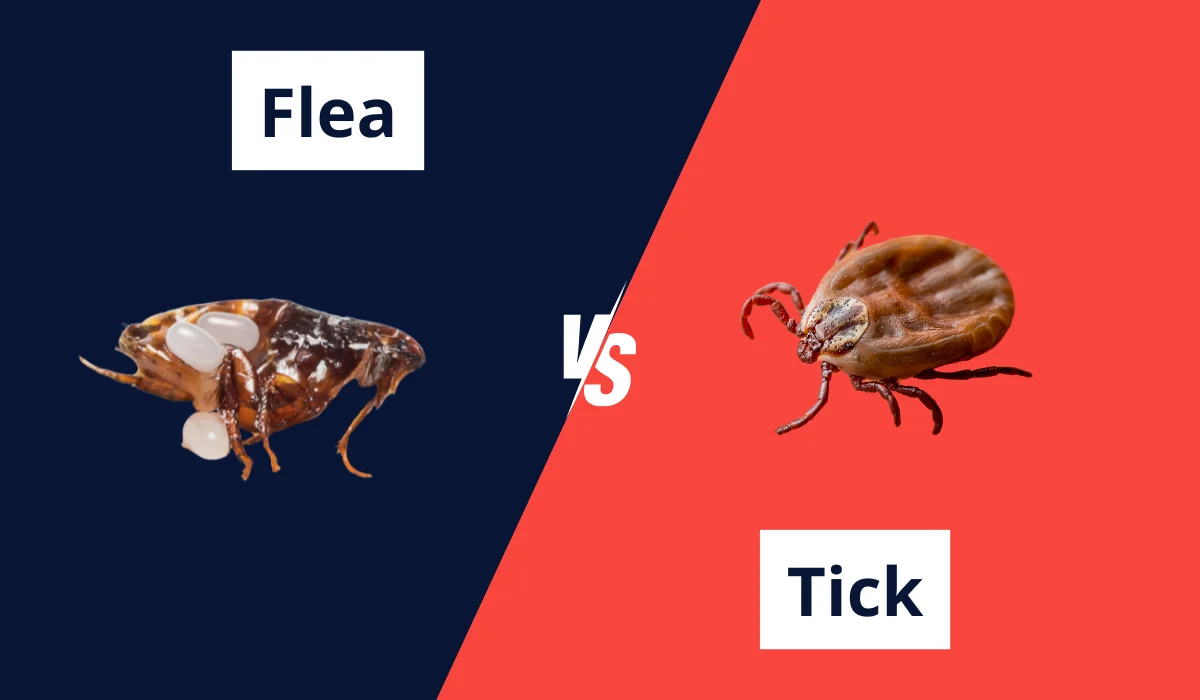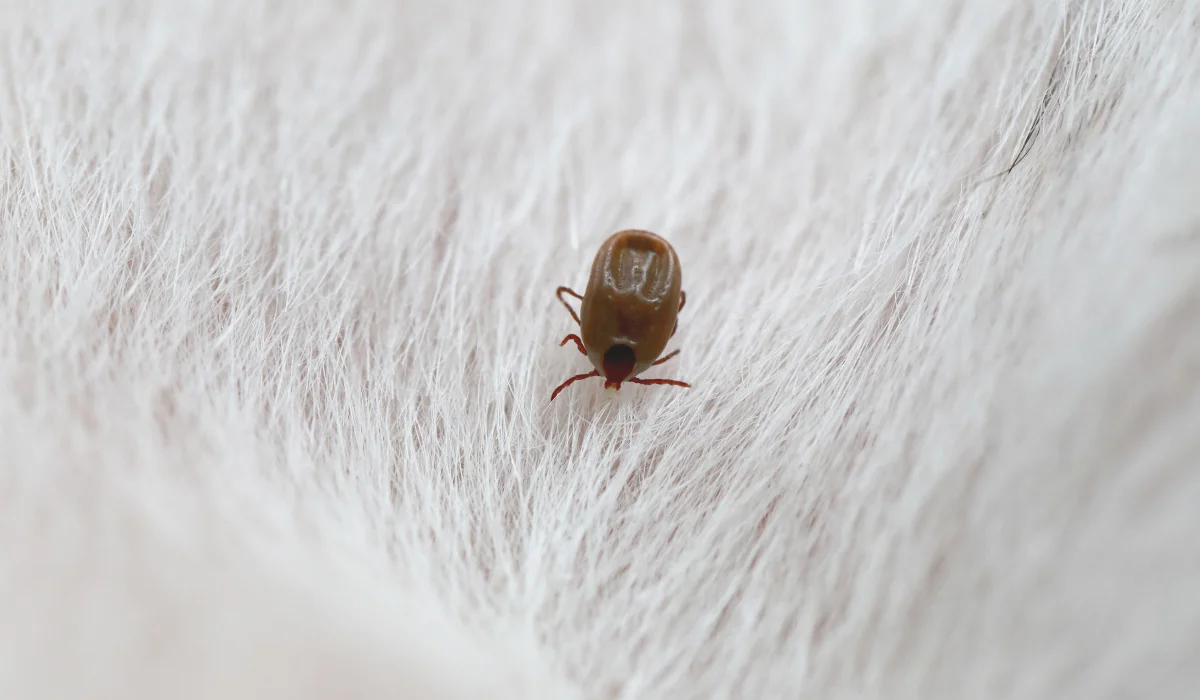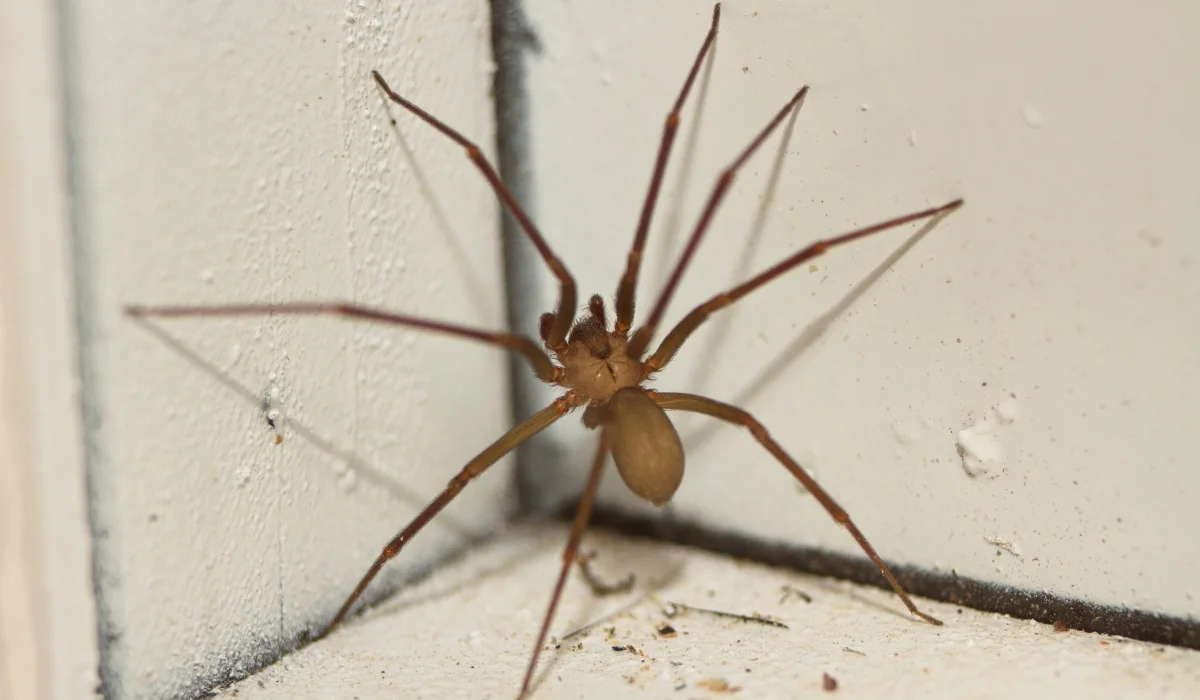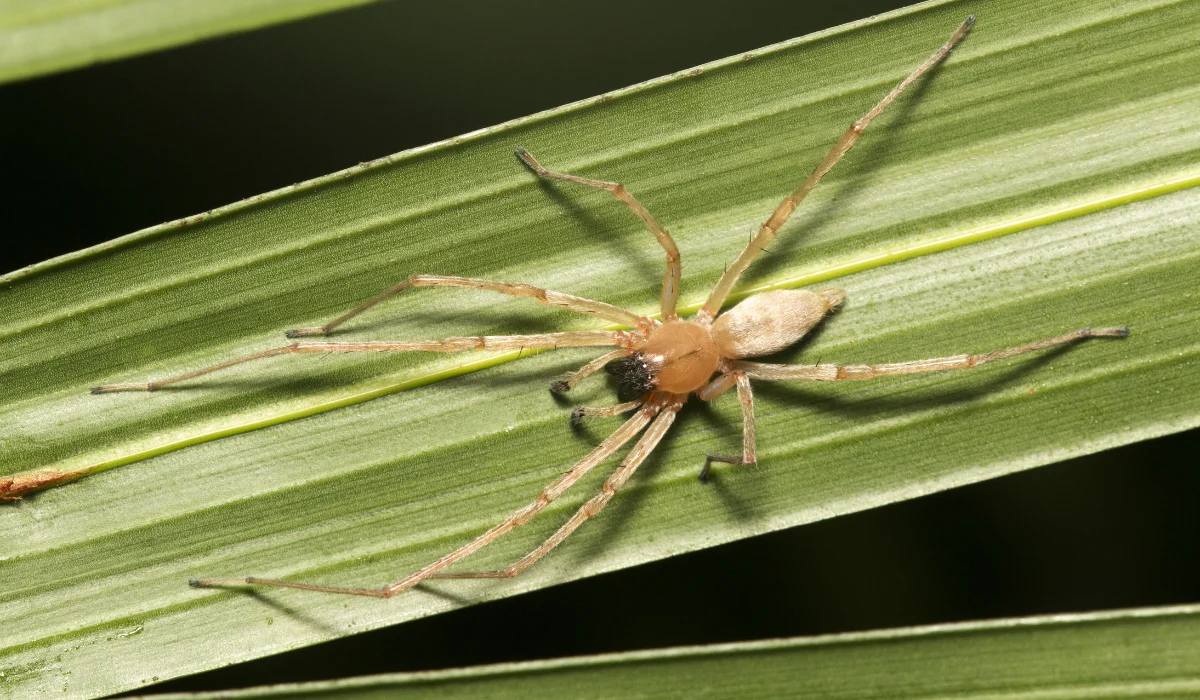Imagine taking your dog for a walk and constantly worrying about tiny pests. Fleas and ticks are more than a minor inconvenience. They can pose serious health risks to pets and humans alike.
Is it more important to safeguard against fleas or ticks? Keep reading to find out the differences between these pests.
Key Takeaways
- Fleas are small, teardrop-shaped insects that jump, while ticks are larger arachnids that latch onto hosts.
- Fleas thrive in warm, humid environments, while ticks prefer wooded areas and tall grass.
- Flea bites cause itchy bumps and scabs, while tick bites can lead to more severe illnesses like Lyme disease.
- Regular cleaning, pet inspections, and professional pest control are essential for preventing and managing flea and tick infestations.
FLEAS VS TICKS: KEY DIFFERENCES

Several critical differences exist between fleas and ticks. These differences include their appearance, habitat, movement, biting methods, and the diseases they transmit.
What Do Fleas and Ticks Look Like?
Fleas and ticks have distinct appearances. While they are usually visible to the naked eye, their similarities end there. Here’s how to tell these wingless insects apart:
Where Do Fleas and Ticks Live?
Fleas and ticks prefer different environments. Consider being wary of these areas when exposed to them:
| Environment | Fleas | Ticks |
|---|---|---|
| Preferred Climate | Warm, humid | Various |
| Common Locations | Pet bedding, carpets | Wooded areas, tall grass |
| Eggs/Larvae Habitats | Grassy areas, homes | Outdoors in vegetation |
How Do Fleas and Ticks Move?
The movement of fleas and ticks is another key difference. While you may not always observe them move, knowing their movement can guide you in taking precautions.
It’s important to understand that while fleas jump, ticks do not. You’ll be able to tell if it’s a flea if it jumps on or off of you, rather than crawl.
How Do Fleas and Ticks Bite?
Their biting methods are also different. Understanding what sets their bites apart can help you plan your approach to pest control.
When fleas bite, it’s quick. They jump on you or your pet, feed, and then jump right off. Ticks, however, can stay on you or your pet for hours or even days. Yikes!
What Diseases Do Fleas and Ticks Transmit?
Both fleas and ticks are vectors for various pathogens. These diseases are often more severe and can have long-lasting effects.
While fleas can transmit tapeworms and typhus, humans are not typically impacted. Fleas can, however, pose a greater risk to your pet.
Ticks, on the other hand, can transmit a number of serious diseases that can impact both you and your pet’s wellbeing. Ticks can transmit Lyme Disease, Rocky Mountain Spotted Fever, Anaplasmosis, Ehrlichiosis, Tularemia.
SIGNS OF TICK AND FLEA INFESTATIONS
When it comes to pets or homes, keeping an eye out for signs of pest infestations is crucial to prevent tick and flea bites.
Signs of fleas may leave tiny black specks of flea dirt in pet hair, known as feces. These specks are digested blood, often found on a pet’s belly or near its groin. If you place these specks on a wet paper towel, they turn reddish-brown.
Ticks tend to attach themselves to the skin, often in hidden areas like behind the ears or under the legs.
You might notice a small bump where a tick is feeding. This bump could remain even after the tick is removed.
HOW TO GET RID OF TICK AND FLEA
A combination of tick and flea treatment strategies can get rid of these unwanted pests. Here’s how you can keep your home and pets flea and tick-free:
- Flea Combs: Use a fine-toothed flea comb to remove these pests. It helps to catch fleas and ticks from your pet’s fur.
- Tweezers for Ticks: Grip the tick as close to your pet’s skin as possible and pull it straight out, ensuring you remove the entire tick.
- Vacuum Frequently: Vacuum the house often to remove any larvae, nymphs, or other stages in their life cycle that might be lurking.
- Wash Pet Bedding: Regularly launder pet bedding in hot water to kill any adult fleas, ticks, or eggs hiding there.
- Hire Pest Control Services: Consider professional pest control treatments for severe tick and flea infestations.
HOW TO PREVENT FUTURE INFESTATIONS
Flea and tick prevention are essential to keeping these pests at bay. Here’s how you can go a long way toward safeguarding against these pests:
- Regular Cleaning: Vacuum carpets, furniture, and pet bedding often, where fleas can lay eggs.
- Outdoor Maintenance: Keep lawns trimmed and gardens well-maintained so ticks can’t thrive in tall grass and piles of leaves.
- Use Repellents: Apply flea and tick repellents in sprays, collars, or topical treatments on pets.
- Check Pets Frequently: Inspect pets for signs of ticks or fleas, especially after being outside in warmer months.
- Bathe Pets Regularly: Use flea shampoos to kill pests on your pets’ fur to help soothe irritating bites.
- Treat the Home: Use flea and tick sprays or powders in areas where your pets frequent.
- Protective Clothing: Wear long sleeves and pants when walking in wooded or grassy areas to avoid tick bites.
- Monitor Health: Watch for allergic reactions or anemia in pets, which are signs of flea or tick bites.
- Professional Pest Control: If flea or tick infestations persist, consider hiring a pest control professional.
WHEN TO CALL A PROFESSIONAL
Sometimes, DIY pest control methods just won’t cut it. If your pet remains infested after treatment, it’s time to call pest control.
Whether you’re in Baton Rouge or New Orleans, seeking expert help should be easy. For immediate intervention for a severe infestation, let Lajaunie’s tick and flea control specialists tailor a solution that’s right for your home.
For more information about LaJaunie’s services, please visit our service page.
Related: Ticks vs. Bed Bugs in Louisiana: What’s the Difference?
 By: LaJaunie's Pest Control
By: LaJaunie's Pest Control 


